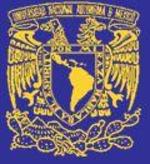Contact : Céline Duwig
IGE
CS 40700
38 058 Grenoble Cedex 9
France
Webmaster : Hervé DENIS
herve.denis@univ-grenoble-alpes.fr
Protinus members organise lectures for postgraduate students of the Computer Science Dpt
PROTINUS Lecture series 26-28 January 2016, Auckland
Tuesday 26/01/2016 2-4pm (Location: 303-561, CompSci department, level 5, room 561)
Celine Duwig (LTHE Grenoble, France and UMSA La Paz, Bolivia): “Soil physics and transport processes"
Abstract: Soil physics aims at understanding physical processes in terrestrial environments and at predicting of the associated phenomena. This is challenging because the underlying processes are often nonlinear and coupled, and they run in hierarchical heterogeneous media with hardly known architectures. These porous media set terrestrial systems apart from other large environmental compartments like the atmosphere or the ocean. We will first understand the importance of soils in the global water cycle as well as the services they render to ecosystems. Soil formation will be addressed and some fundamentals soil physics will be given that are necessary to mathematically describe water transport processes. We will end with examples of experimental set-ups to study transport processes in soils.
Wednesday 27/01/2016 2-4pm (Location: 303-561, CompSci department, level 5, room 561)
Georgy Gimel'farb (UoA, Auckland, NZ): "Stochastic Modelling for Image Analysis: A brief tutorial" Abstract:
Abstract: This tutorial gives an informal (formulas-less) introduction to simple probabilistic image models. The latter are often used in applied image analysis as a basis for deriving simple operations of image enhancement, noise suppression, computation of local signal statistics, and segmentation. In spite of their simplicity, these tools are common components of almost all intricate today’s image analysis algorithms. Basic ideas behind unsupervised identification and segmentation of images with multi-modal marginal probability distributions of signals and behind refinement of rough region maps by using local dependences of region labels, described with a Markov random field, are clarified. The tutorial is illustrated with examples of medical and soil image processing.
Thursday 28/01/2016 2-4pm (Location: 303-412, Maths department, level 4, room 412)
Laurent Oxarango (LTHE Grenoble, France): “Modeling the water flow in unsaturated materials: The "classical" Richards equation"
Abstract: The water flow in superficial terrain mainly occurs in unsaturated conditions. In order to describe accurately this phenomenon, several physical aspects must be taken into account such as capillarity effects or evolution of the permeabilty with the water content. The most famous model used to describe this problem is the Richards equation that is based on the mass balance of water and several assumptions. The resulting mathematical form is highly non linear and requires a careful numerical treatment. The Finite Volume method will be used to explain the solving methodology that is generally implemented in simulation softwares. Finally, some exemples will be presented to highlight the behavour of water flow predicted by this conceptual model.
Important notice
PROTINUS is preparing a Special issue in Soil Research
A special issue on ": Linking soil Structure and Soil Functions" is actually in review in Soil Research, for publication end of 2018. https://www.publish.csiro.au/sr













